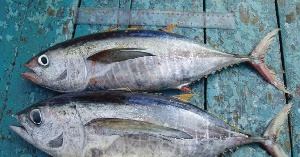As part of strategies to diversify Ghana’s export market for tuna and other fishery products, the Ghana Export Promotion Authority (GEPA), as part of interventions under the National Export Development Strategy (NEDS), will explore other markets aside the European Union (EU).
GEPA has identified that the overreliance on the EU market for Ghana’s tuna and fishery product in the next decade, could hinder the country’s goal of achieving a projected revenue of US$1.121 billion from export of tuna and other fishery products by 2029.
The Authority, apart from its ambitious revenue goal in the next decade, is also targeting to rake a fishery export revenue of US$153 million by the end of next year.
In 2017, Ghana exported 51.700 tonnes of tuna to markets worldwide. Italy, UK and France are the largest EU importers of tuna products from Ghana according to the European Market Observatory for Fisheries and Aquaculture Products.
While GEPA appreciates the proximity of Ghana’s fishery products to the EU market, the Authority, albeit, regards the free access to the country’s territorial waters by EU tuna fishing vessels and the illegal, unregulated and unreported fishing by some of these vessels as major threats.
Another key strategy to augment export to other markets, notably on the mainland Africa continent, include the retooling of the country’s existing tuna fleet, by scrapping old vessels for new ones.
The NEDS is also targeting to promote investments including FDIs in the development of aquaculture to lay the foundation for a sustainable exports of high value species such as shrimps.
The fisheries sector in Ghana is estimated to contribute three percent to the total GDP and five percent of the value of agricultural production.
About 10 percent of the country’s population is engaged in various aspects of the fishing industry.
Click to view details



Business News of Saturday, 14 November 2020
Source: goldstreetbusiness.com

















